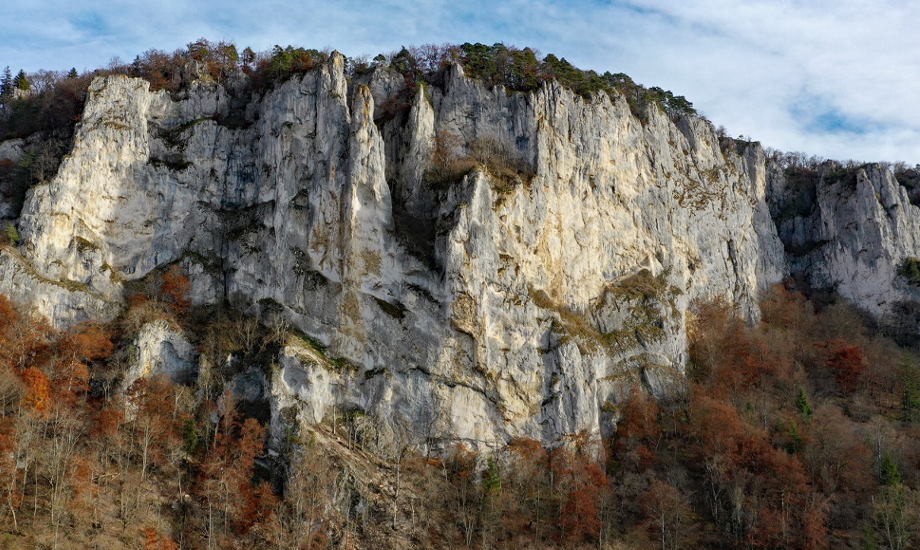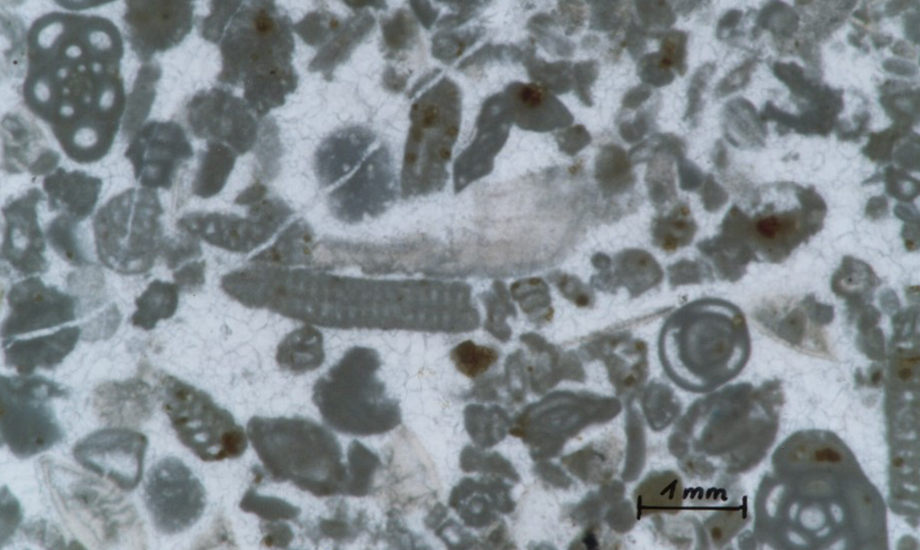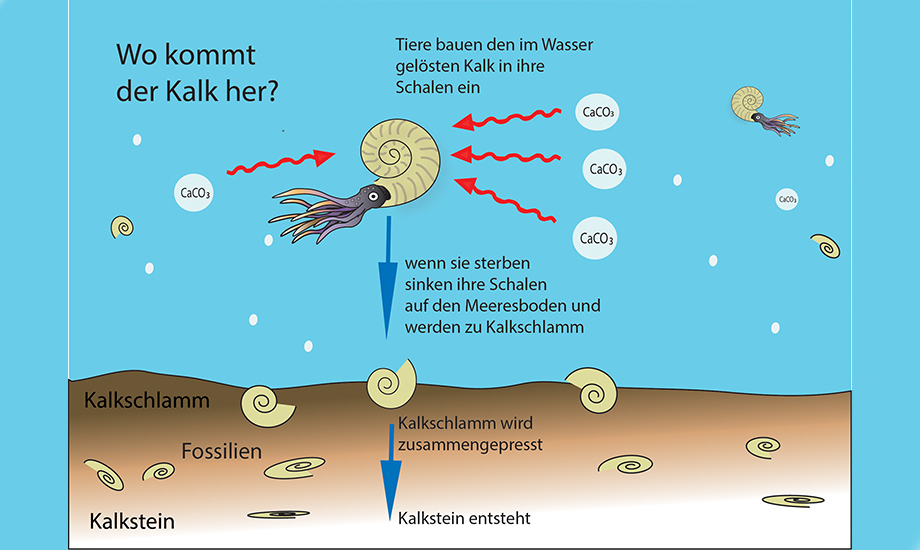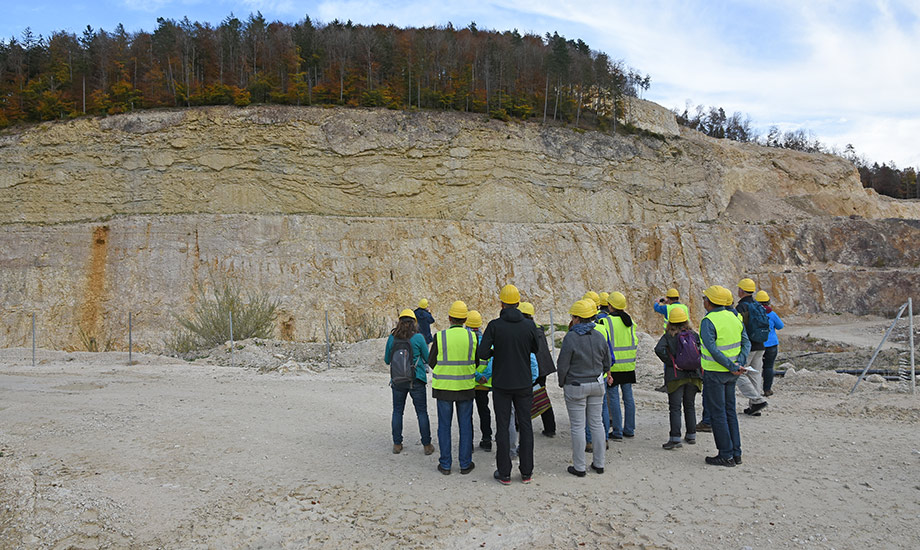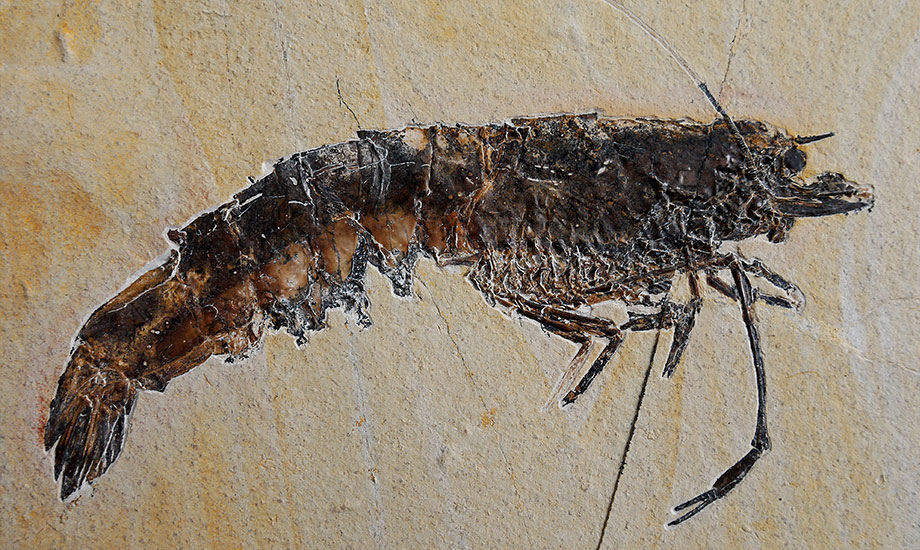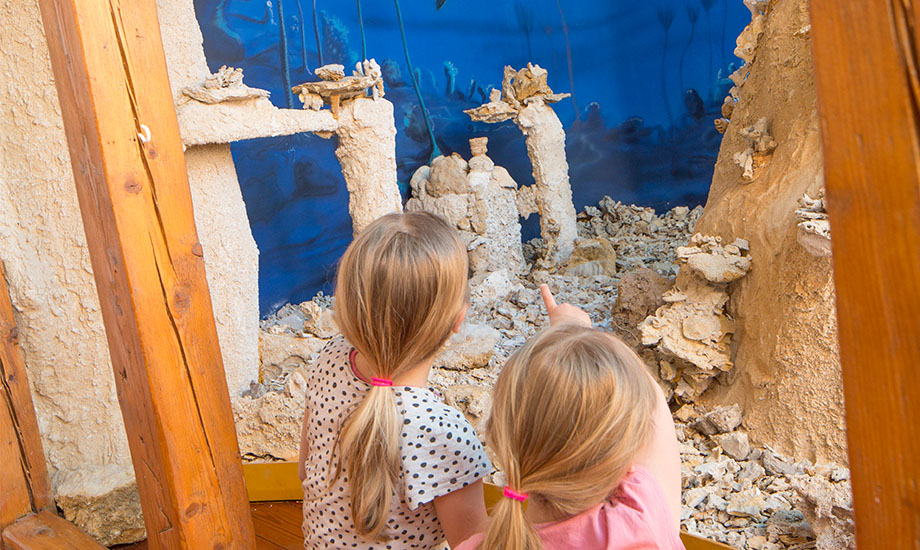The white rocks of the Swabian Alb
The characteristic light-colored limestone of the Swabian Alb is seen on road embankments, weathering rocks or quarry walls. Even under our feet there are still mighty layers of these rocks being hundreds of meters thick. The term "white gold" indicates their importance as a raw material in the Alb. But how did they form?
The rocks formed during the Upper Jurassic period: Until about 142 million years ago, the area of today's Swabian Alb was covered by a shallow tropical sea. Different kinds of sea creatures lived in its light-flooded warm water and protected themselves by shells and skeletal elements made of calcium carbonate (calcite). They actively retrieved the dissolved material from the seawater and used it to build their shells (biomineralization). When these calcifying organisms died, their shells remained and collected as lime mud at the bottom of the sea.
Over millions of years, more and more material sedimented. More and more pressure rested on the deeper layers, forcing water out and compacting and "cementing" the small lime grains that made up the mud. At a certain pressure, dissolution processes began, minerals were recrystallized, replaced or reformed. This slow process of "petrification" is called diagenesis.
Typical for the sea of the Jurassic period were also reef-like formations, but they were not formed by corals as today, but by microbial mats and sponges. Coatings of cyanobacteria retained lime particles and thus formed thick crusts. These former reef structures are harder and more resistant than the surrounding limestone, which was formed from calcareous mud. Today, they predominantly represent the rocks that weather out. The brilliant white colour of these so-called mass limestones indicates the high purity of the rock, which consists of up to 99 percent of the mineral calcite.
